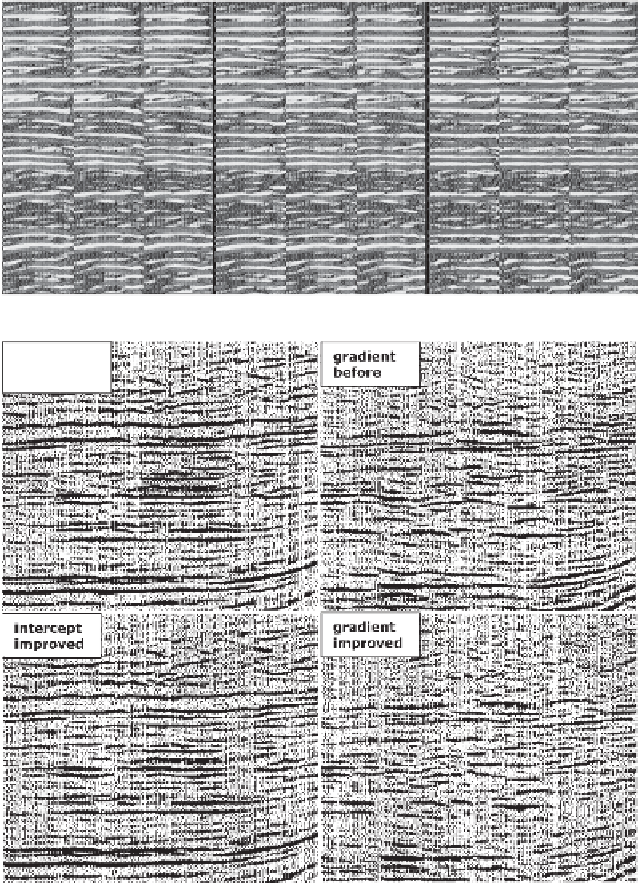Geology Reference
In-Depth Information
a)
Initial migration
b)
Higher order NMO
c)
With trim static
Figure 6.12
Three adjacent gathers after
(a) initial migration, (b) after additional
higher order residual moveout correction
and (c) after additional trim static
flattening. Gather flatness has been
significantly improved (from Gulunay et al.,
2007
).
Figure 6.13
Intercept and gradient
sections calculated from gathers before
(top) and after (bottom) trim static
flattening. A significant amount of residual
energy has been removed from the
gradient (Gulunay
Intercept
before
Gradient
before
et al.
,
2007
).
Intercept
improved
Gradient
improved
Of course, the trim static can be calculated in multiple
gates down the traces, so as to align events at different
TWTs. It should also ideally be applied in a multi-
trace methodology to avoid introducing steps in
reflectors where different static shifts have been cal-
culated on adjacent sets of traces.
the amplitude variation that would be expected purely
from AVO effects at the individual reflectors. This
often leads to uncertainties in how to scale the offset
component of the seismic (i.e. AVO calibration).
Whilst it may not be necessary to correct the scaling
if the purpose of a study is restricted to identifying
anomalous AVO behaviour, the issue can become
important in situations where some quantitative
interpretation of the AVO signature is to be made
(Ross and Beale,
1994
).
Perhaps the most robust approach to offset scaling
is provided by well ties (see
Section 4.7.5
). If the
6.3.3 Amplitude scaling with offset
Despite the best efforts of the seismic processor, it is
often the case that the amplitude variation with offset
in the final CDP gathers does not faithfully represent
121




